4. 2024 Summer Potato: Improving prediction methods
In 2024, record heavy rainfall 7) was observed over a wide area including the Kathmandu Basin on September 28. The Sankhu backbone canal was near overflowing in the middle reaches, and some fields were flooded to the tops of the high ridges of potato plants that had just been planted with seed potatoes. In the midstream area, planting began in earnest in early October, but unlike in previous years, we found epidemic-affected leaves in all areas.
How the unique weather conditions of record-breaking rainfall affect epidemic disease forecasting is explored, and how the use of prediction by BLITECAST can be improved, based on observation of epidemic disease outbreaks in Sankhu. In the following, some of the meteorological observations used for BLITECAST calculations will be supplemented with AccuWeather data, while rainfall will be derived from rainfall observations at the Sali Nadi weir station of the DHM of the Hydro-Meteorological Department of Nepal.
7) The monsoon, which became active at the end of September, brought heavy rains across the country, causing landslides, flooding, inundation, and road closures, seriously affecting daily life, transportation, and overall safety. 25 stations in 14 districts including Kathmandu, Lalitpur, and Bhaktapur set 24-hour rainfall records on September 28. The Precipitation for the three days from the 27th to the 28th reached 517.0 mm in Daman, located within 50km southwest of Kathmandu. Government of Nepal (2025)
Summer potato growth in 2024
The progress in planting seed potatoes for the 2024 summer season is explained using zoning in Figure 1 (The photos were taken mainly in Mid Zone II). The earliest planting was September 20 in Zone III-4 in the Salinadi River riparian zone in the lowest reaches of the river. In Zone I-1, the upper irrigation area, seed potatoes were planted on September 26, and in Zone II, the middle irrigation area, seed potatoes were planted after October 3rd.
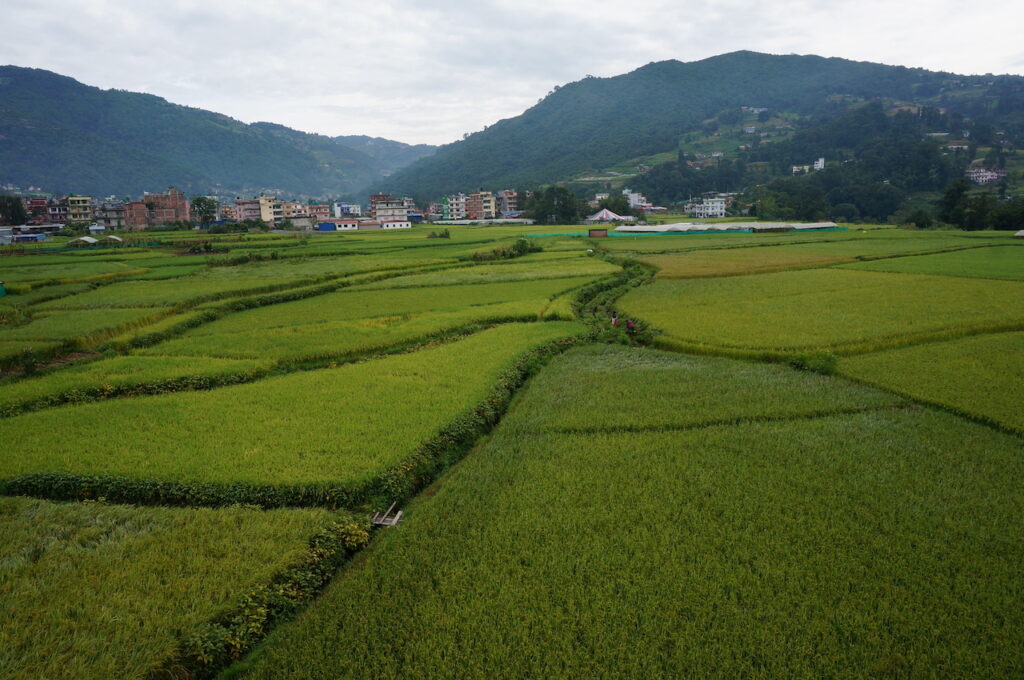
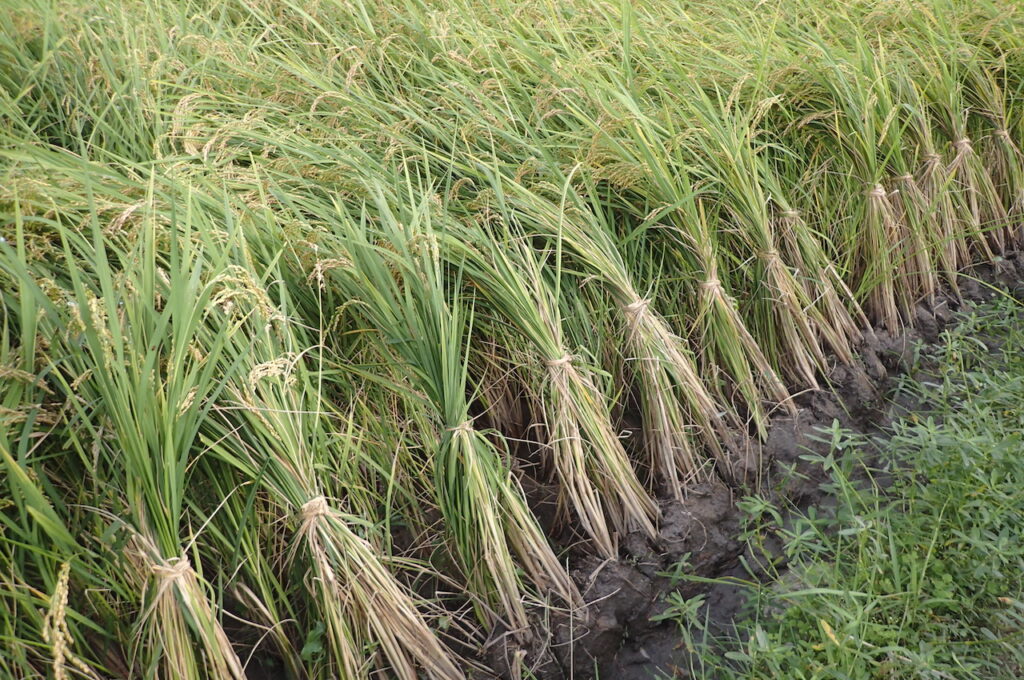
Photo-02 September 14 There is no paddy harvest activity in the midstream Zone II
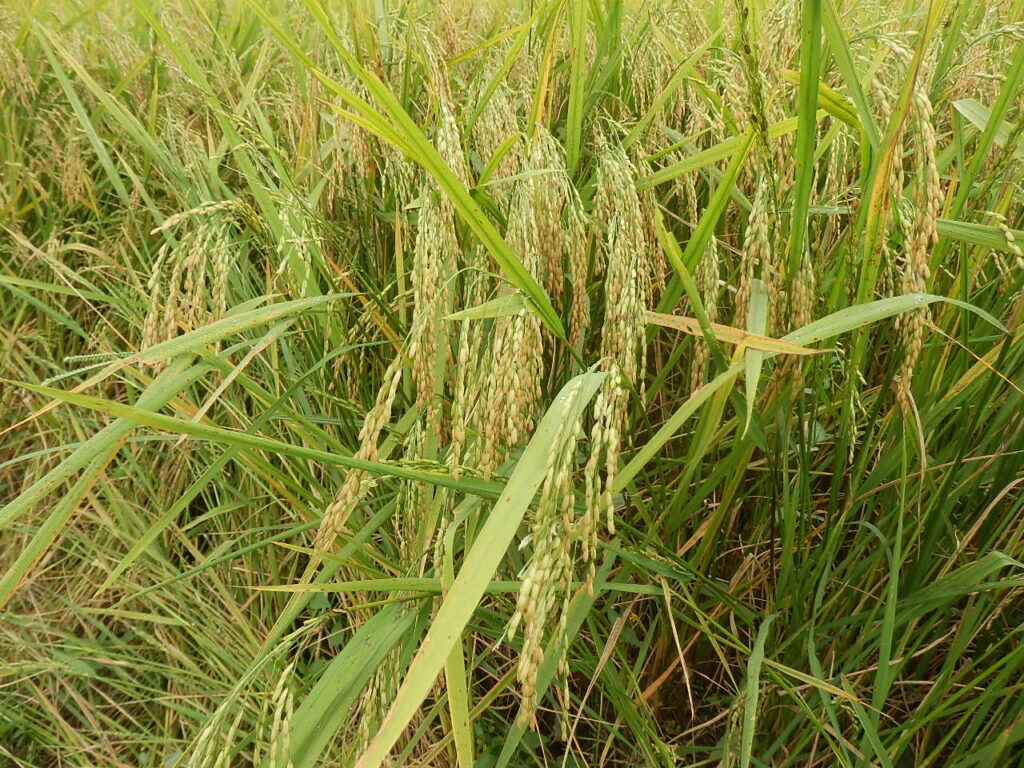
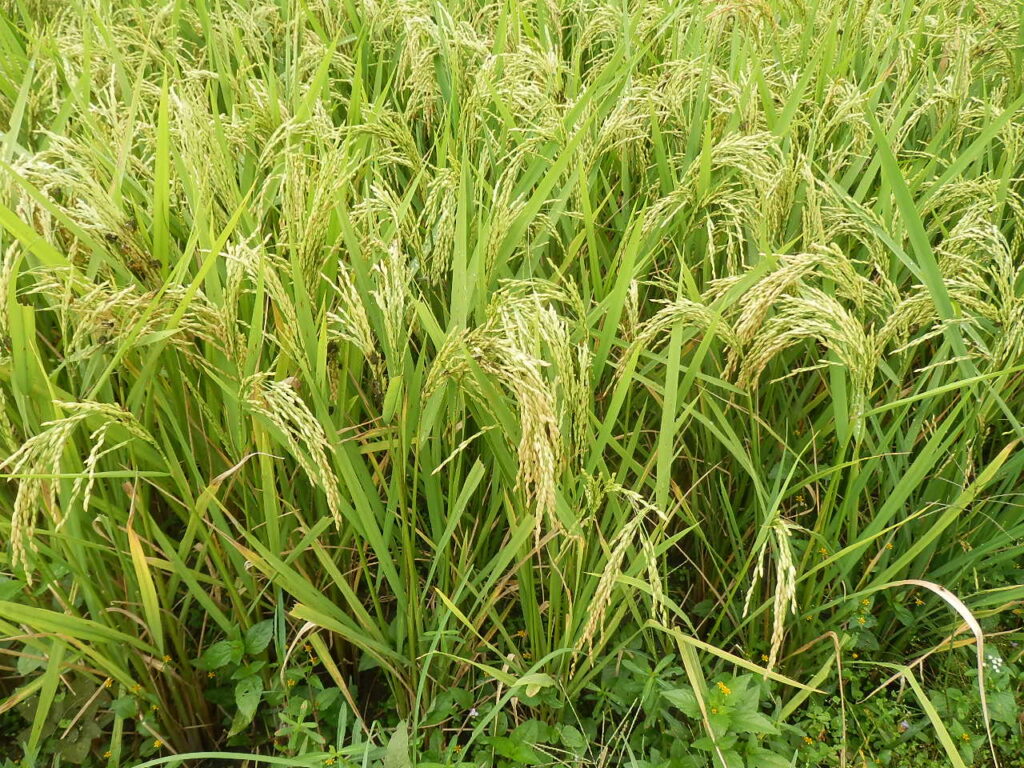
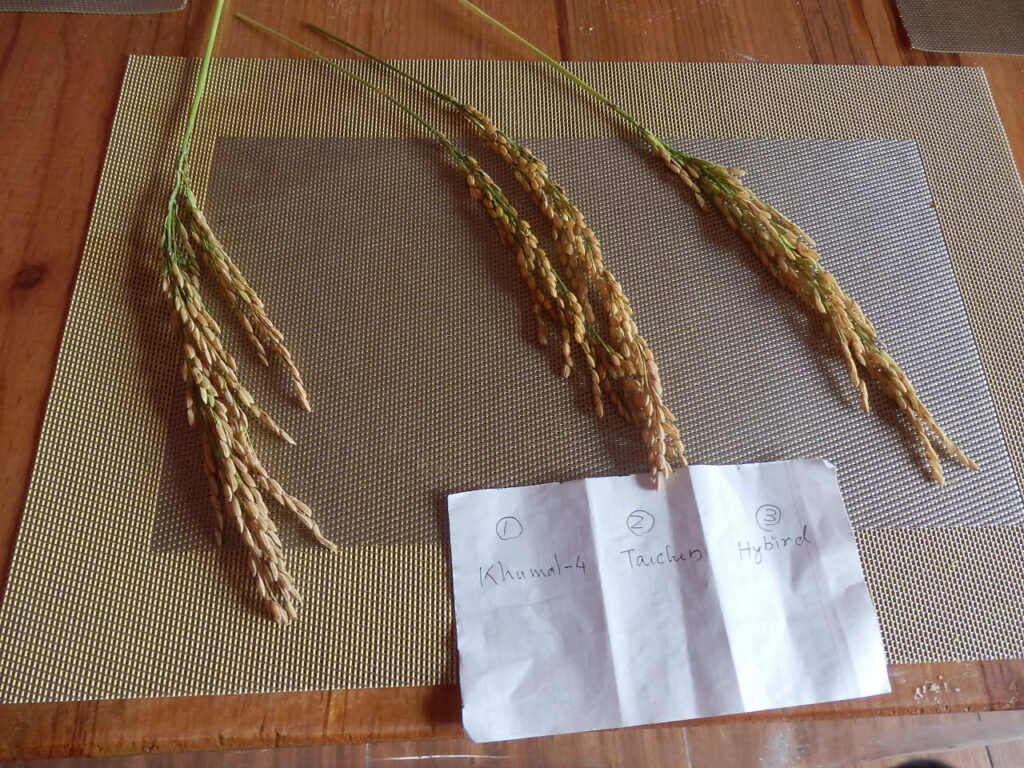
Photo-03 Paddy rice just before harvest: Khumar, Taichun and Chinese hybred varieties
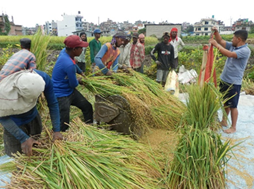
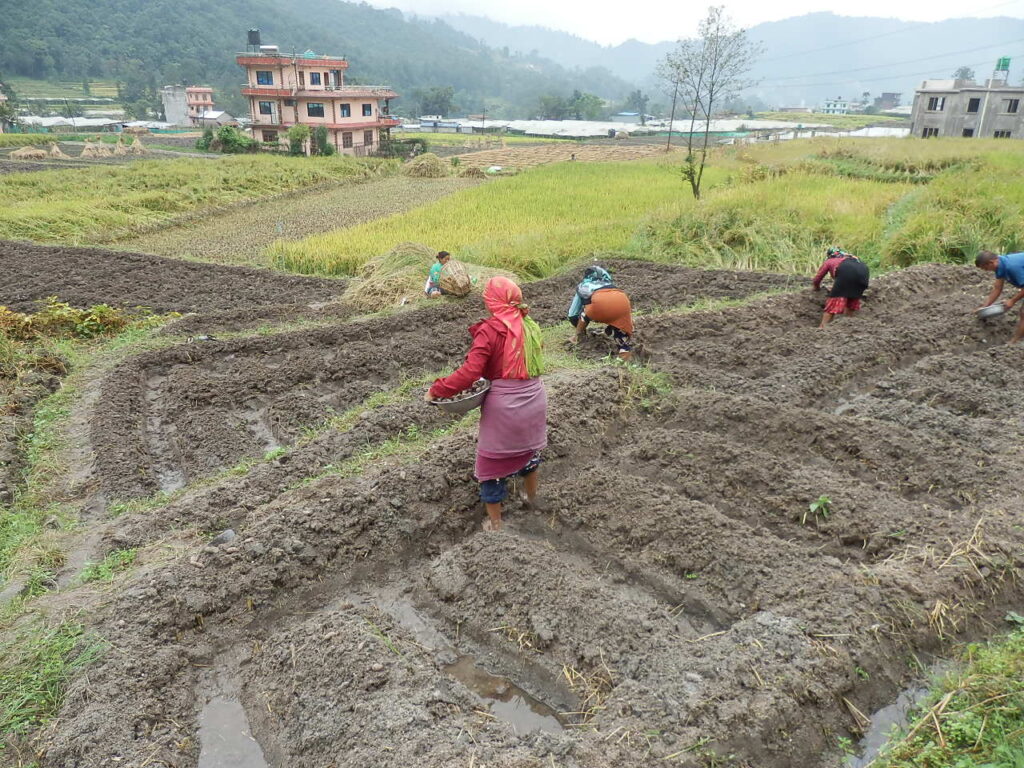
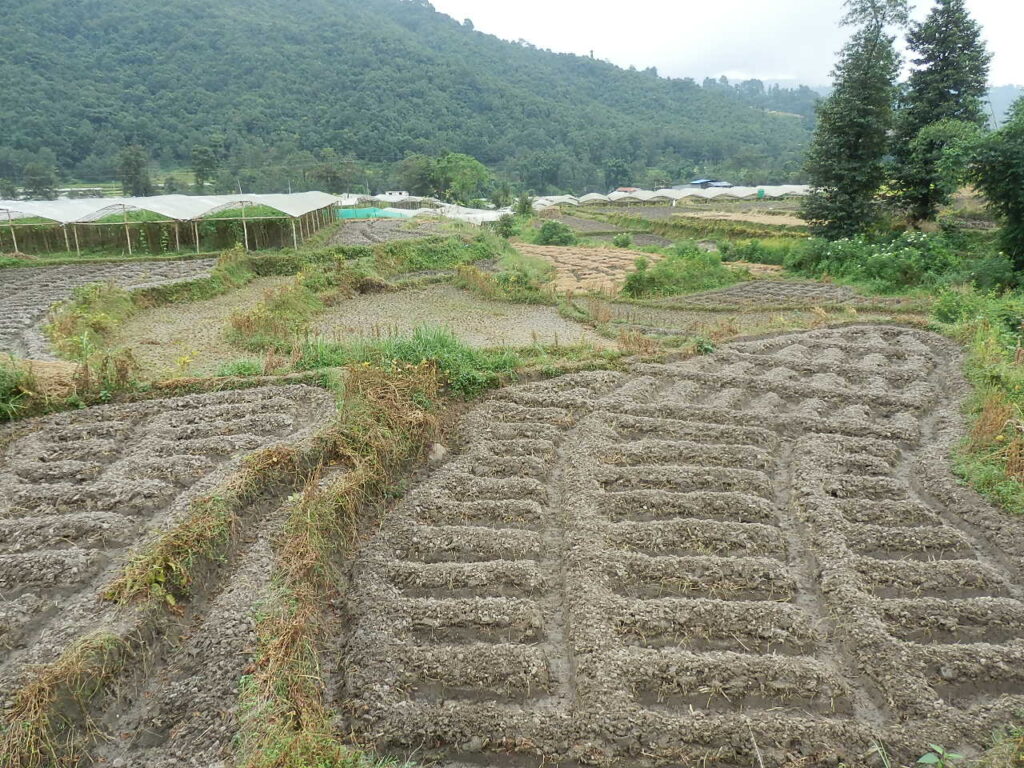
Photo-04 September 24 There is no paddy harvest activity in the midstream Zone II except for two plots.
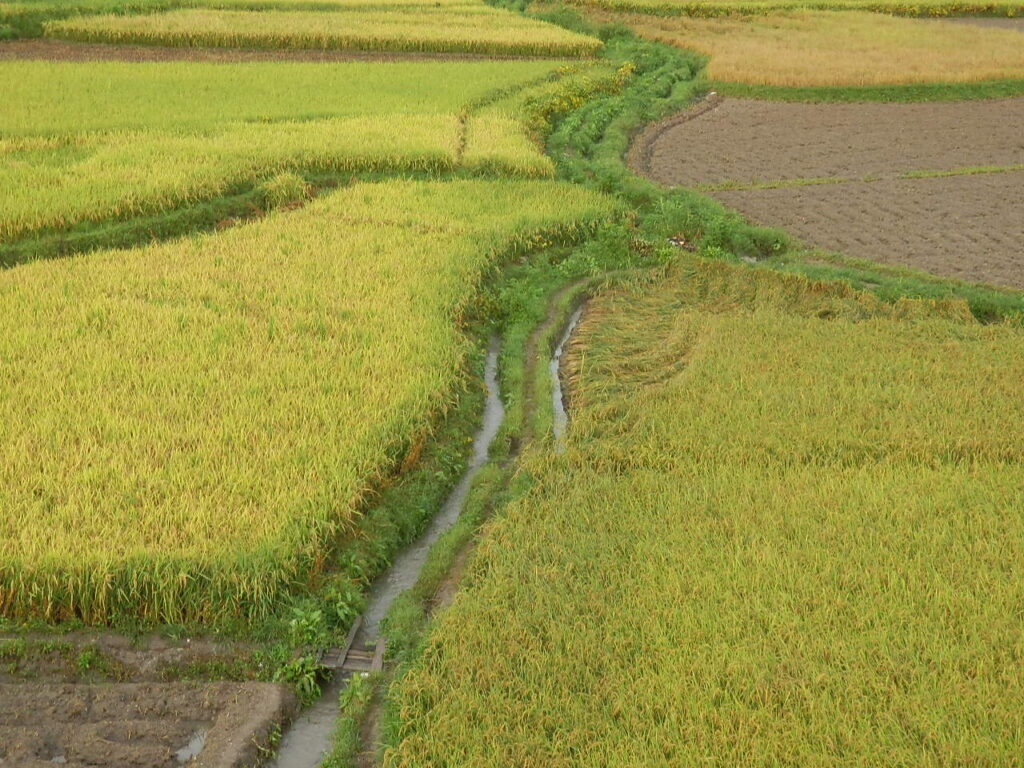
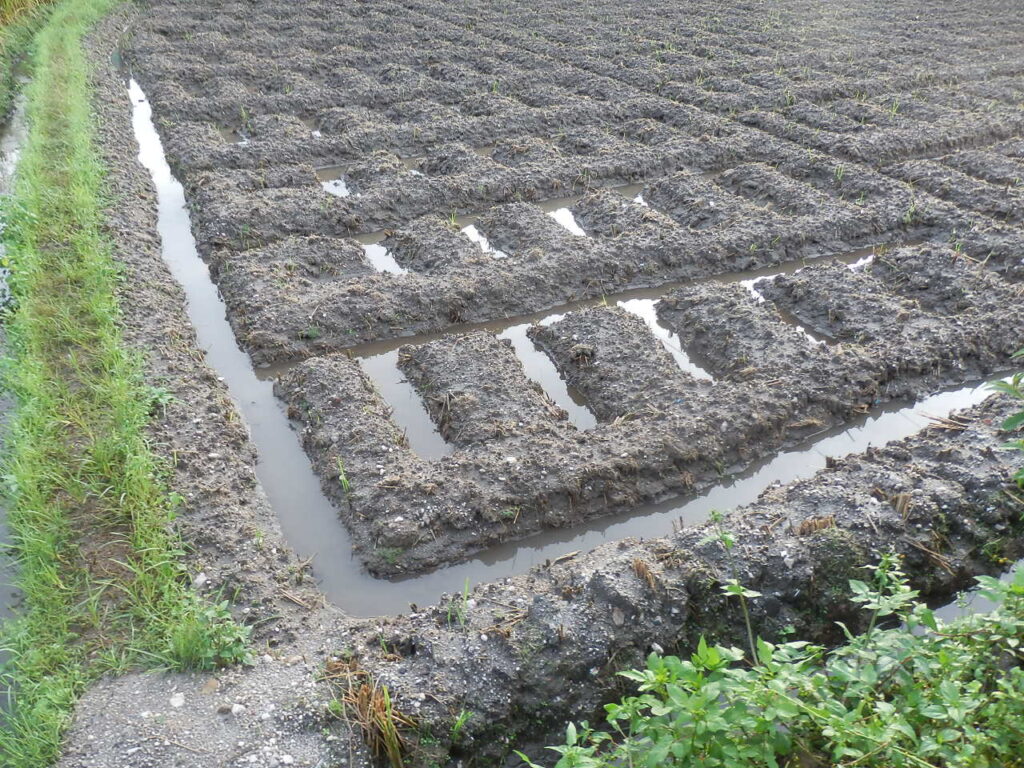
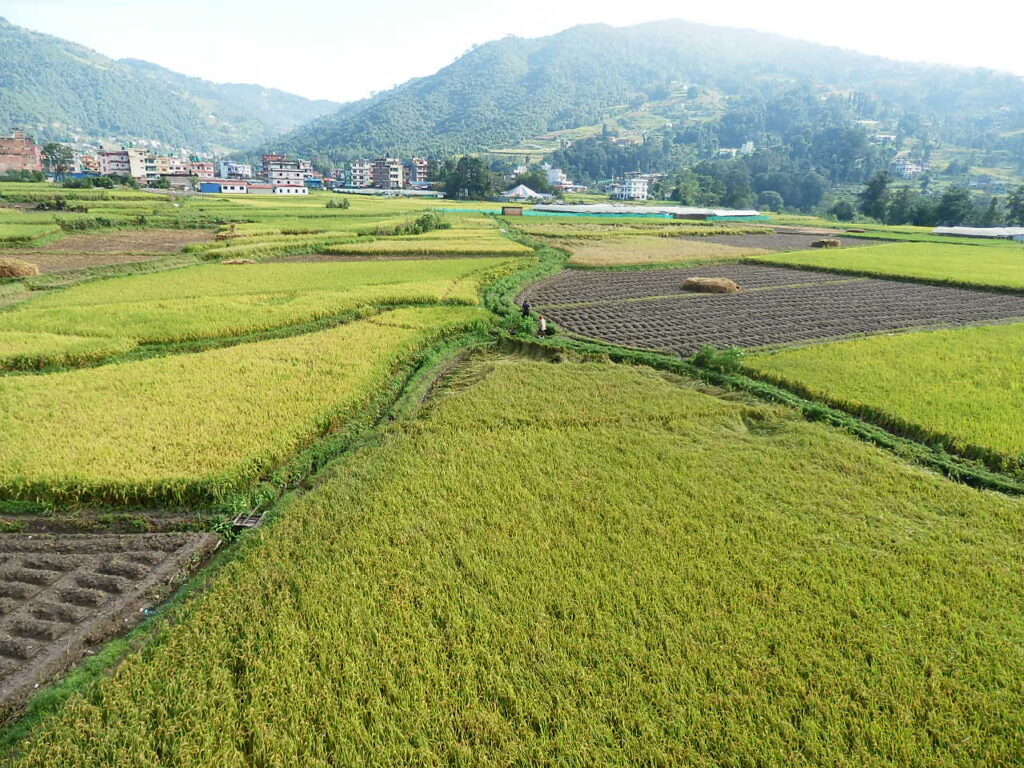
Photo-05 September 28: Situation in Zone II – 3, September 29 the day after the heavy rainfall (water level in the main canal is still high)
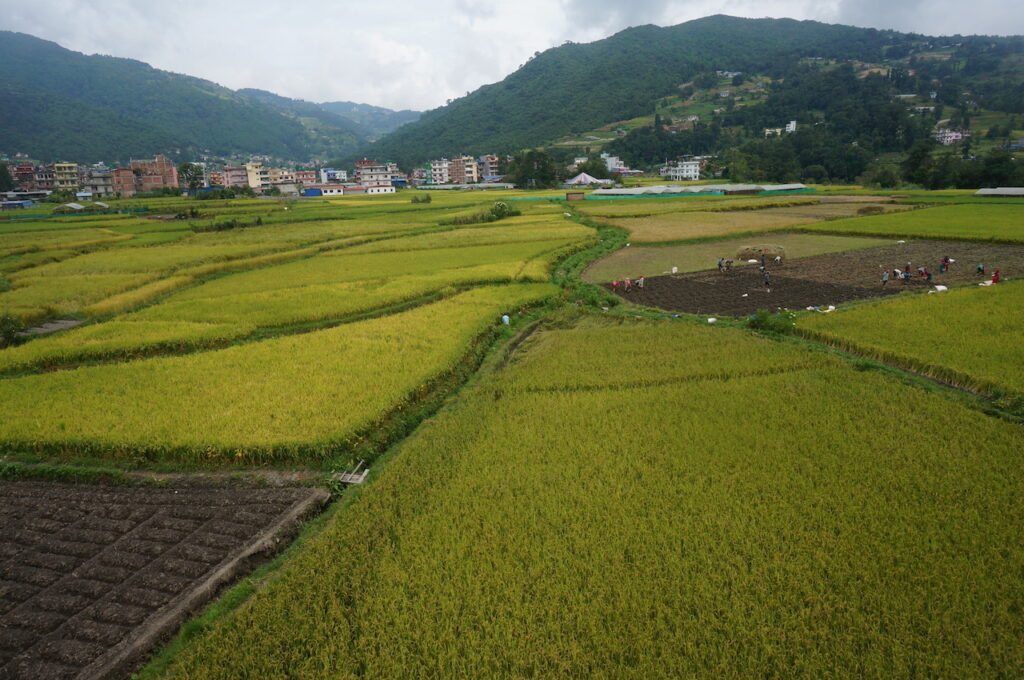
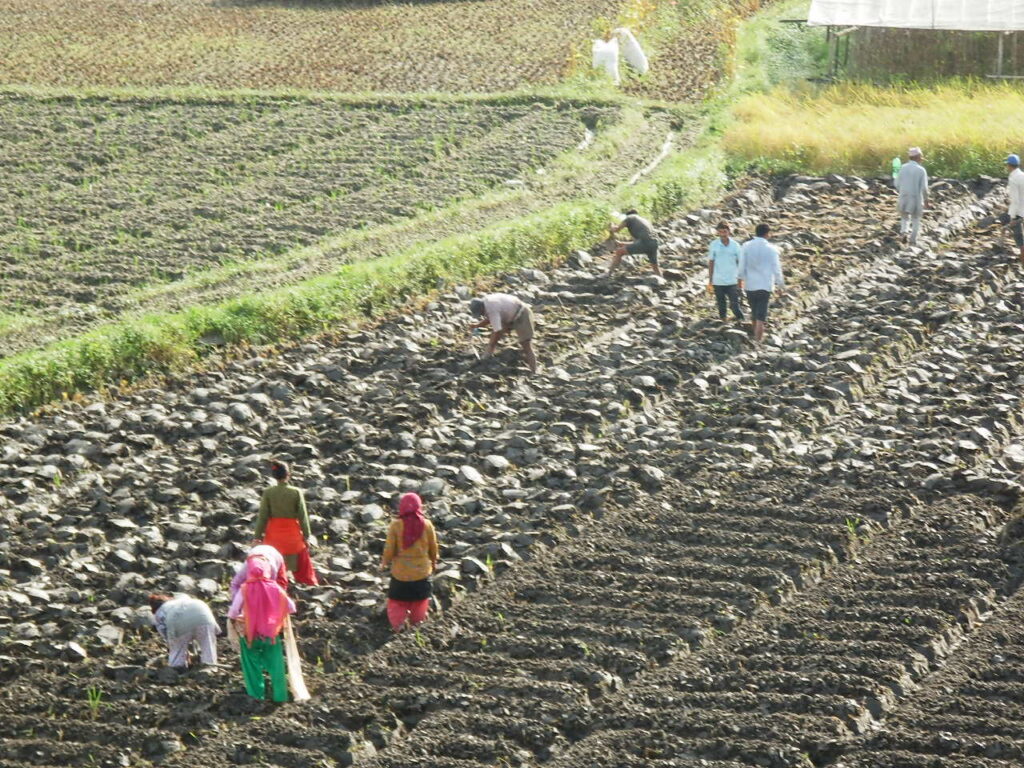
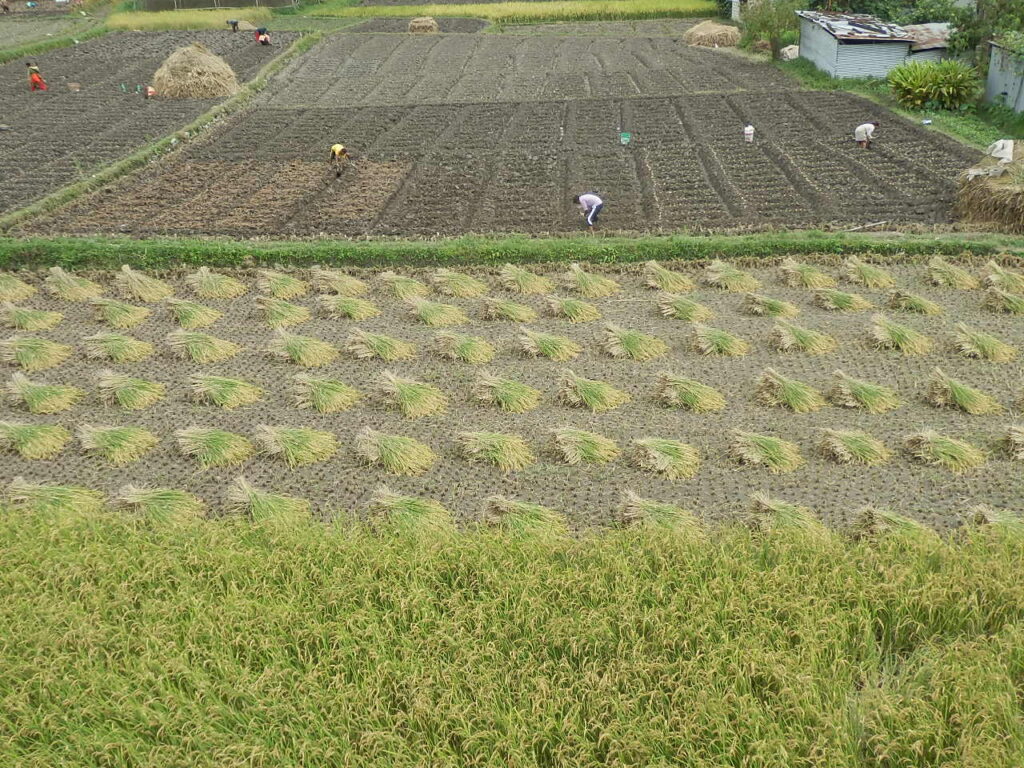
Photo-06 October 1: Midstream II, just before paddy rice harvest (right). October 3: High ridges were made immediately after paddy harvesting. and planting of seed potatoes began.
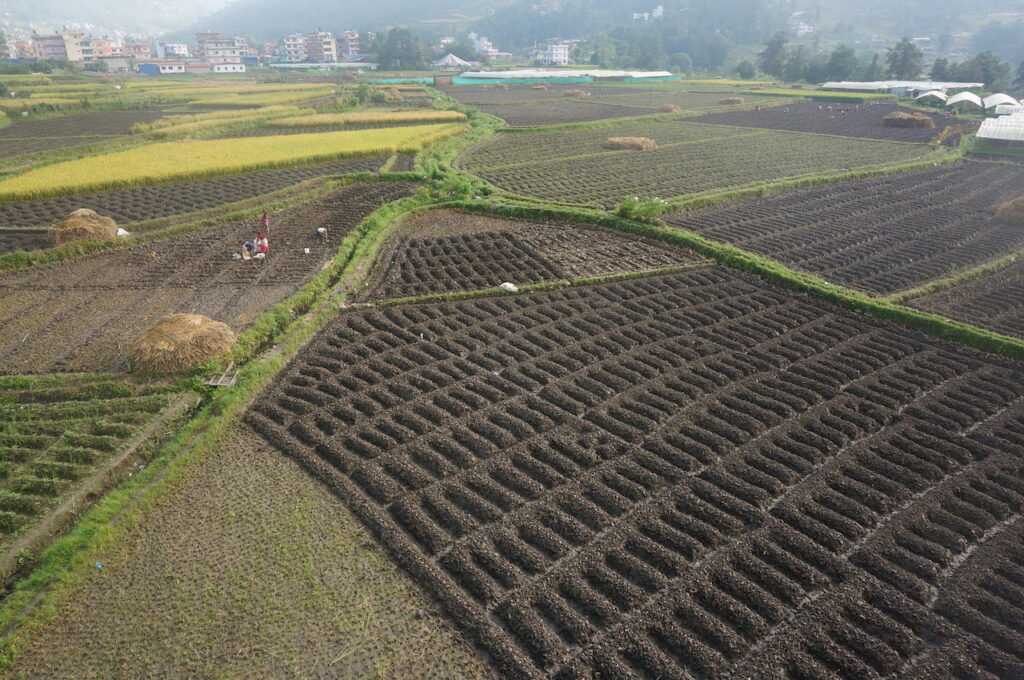
Photo-07 October 7: Seed potato planting work completed in Midstream Division II
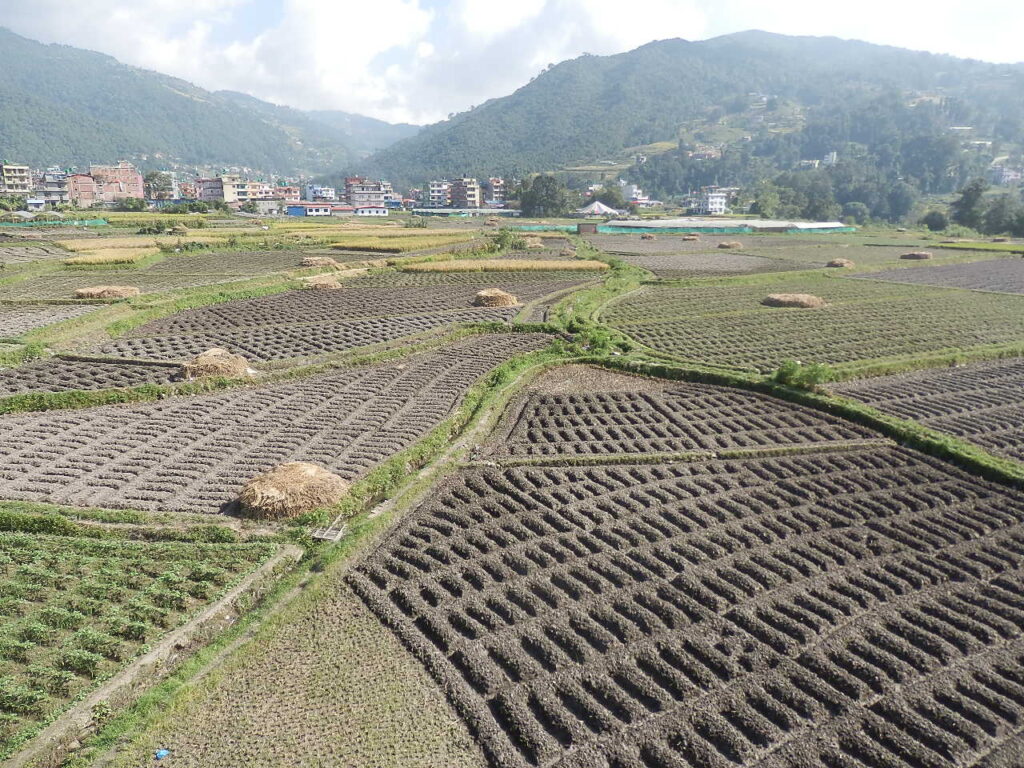
Photo-08 October 11: Planting completed in all areas of Midstream II
Photo-09 October 18: Zone II almost emergentd, first application of fungicide in Zone II-R plots.
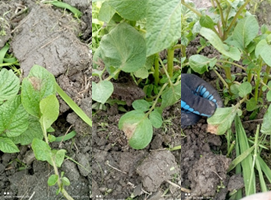
Photo-10 November 1 Confirmation of the first outbreak of blight in Zone II-S plots

Photo-11 November 2 Observation of diseased leaves at the edge of the drainage channel
On September 28, there was record rainfall over a wide area, including Kathmandu. The daily rainfall according to the Nepal Hydro-Meteorological Department DHM, which is located right next to the weir intake (B) of the Salinadi River, was 25 mm on the 27th, 172 mm on the 28th, and 16.5 mm on the 29th. In Zone II, where seed potatoes were planted on the 26th, the irrigation canal overflowed and the tops of the high ridges were under water.
Fig. 5 shows the BLITECAST disease forecast for summer 2024 potatoes. Results show that by Wallin’s criteria, the DSV did not exceed 2 after 29 days, so there was no concern about blight at all. However, in late October, epidemic disease was confirmed in Sankhu more extensively than usual. Were the predictions wrong?
In Sankhu, summer potato tuber is planted in the late monsoon. The timing of the end of the monsoon varies from year to year and its impact on the diseases needs to be analysed carefully. Let us note here a modification, note in Table 1, to the Severity Index Score of WISDOM, the local version of the BLITECAST epidemic forecasting method: Record rainfall on September 28 flooded the high rows of a baled potato field in a field where planting had been completed. In this field, “relative humidity above 90% persisted for more than 21 hours” and “an immediate first epidemic” was possible. However, because BLITECAST predicts lesion onset using data after emergence, the weather data on the day of the heavy rainfall is not included in the DSV calculation 8). As a result, DSV=2.
8) See the data in the Appendix; in Hyre’s (1956) study, favorable conditions for blight outbreak were a 10-day rainfall of 3.05 mm or more and an average temperatures of 25.56°C or less for 5 days. We can conclude that, at least for the period from September 27 to October12, the risk of blight outbreak was very high.

Fig. 5 Late Blight Disease Severity- in Summer Potato, 2024
In summary, the failure to predict the outbreak of summer potato disease in 2024 should not be treated as an ‘outlier’, but the mechanism of the outbreak, which would have been caused by ‘record rainfall’, should be examined as a challenge for the use of region-specific weather information in late monsoon, and the forecasting method should be improved.